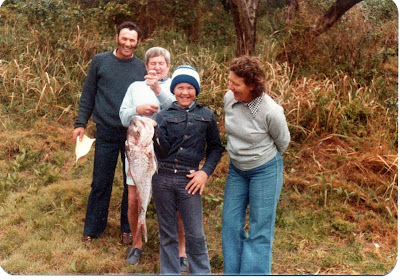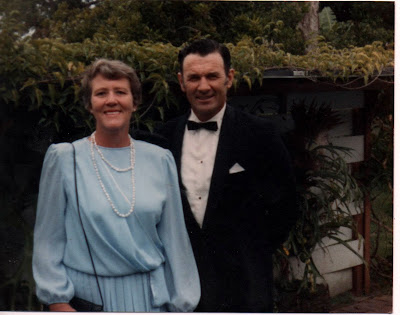THIS DOWN UNDER LAND OF AUSTRALIA
The southernmost island of Tasmania is often left off maps featuring Australia, an oversight that causes a great deal of teeth gnashing and distress to resident Tasmanians.
Personally I can’t blame them, I think that little badge shaped emblem at the bottom right of our map adds a certain sense of devilish balance or charm, whichever you prefer, to the extraordinary outline that defines Oz. You know what I mean, the big part somewhat like a squashed soccer ball adrift in the ocean, wide in the girth and exploding out on the edges into long fingered promontories and craggy headlands.
No matter the reason, Tassie definitely belongs on our map, it is Australia’s eighth State or Territory, home to spectacular world heritage wilderness, hosts one of the worlds most challenging yacht race, produces heavenly wines, is home to more than 20 varieties of potatoes and what’s more it boasts Australia’s oldest brewery. Hold on, I nearly forgot the apples!
We can thank Captain Bligh for planting three apple seeds he picked up in South Africa around 1788 when his ship, the infamous Bounty, stopped there to stock up on essentials, that first unidentified apple the forerunner of many hundreds of apple varieties.
In other words, the island that started off with the name Van Diemans Land has a lot to offer prospective visitors.
My reason though for finally visiting the island state was a bit more personal. That daughter of mine who with husband Chris is now calling Ecuador home spent a number of delightful years in Tasmania, with Chris finding out all he could about the wine growing industry while Jenny learned to combat the cold.
Because make no mistake about it Tasmania is just about as far south as you can go without running into polar ice floes. And yes, in winter it does get very cold. As I write it is late December here in Oz, newspapers report the temperature in Hobart has dipped alarmingly and unseasonably and snow is falling on Mt Wellington, that tall monolith you see in the background of the picture above.
Admittedly it was winter when I last visited the mountain some years ago and coming from the tropical heat of Queensland, as you can clearly see. it was all I could do to keep my teeth from chattering.
Mt Wellington plays an important role in the life of Hobart’s population. You notice everyday workers and shoppers gazing up to the mountain, hear their comments, ‘looks like weather coming in, could be snow’ or on a beautiful sunny day, ‘ah, it looks grand doesn’t it.’
One quaint winter custom followed mainly by the younger element is to race up to the top of the mountain to bring back down the seasons first snowfall in the form of a snowman on their car roof. My son in law fell into this category when he entertained his small nephews, the tadpoles, on their first visit to Tasmania.
 | ||||
| A SMALL EFFORT AND MELTING FAST, BUT A SNOWMAN NEVER THE LESS |
Tasmania has a magic all it’s own. In a matter of hours you can drive from ski slopes to ocean water sports, from the Franklin River wilderness to the tall trees of the Huon Valley. And you’re ever mindful you’re so far south there is absolutely nothing, not even a golf club between you and the South Pole.
You can feast on lobster and scallops or enjoy the high quality locally raised lamb and beef. You can go crazy in a produce store sorting through type after type of home processed cheese, freshly grown vegetables, local apples and cherries. And the wines in all their varieties are to die for.
Hobart’s colourful and bustling Salamanca market in the historical old waterfront part of the city is a Sunday must do event for locals and tourists alike. As is another event held during the Christmas New Year period, the extraordinary Tastes of Tasmania held adjacent to the historical Salamanca precinct. A huge affair featuring the best of the island’s foods, from oysters to lobster, venison and lamb, fine cheeses and wine with a background of music and entertainment. It’s an all in one example of culinary Tasmania at its best.
Tasmania is also a magnet for history buffs. The Dutch explorer Abel Tasman named the island Van Diemans Land in 1642 to honour his ship’s sponsor. I imagine even in those days one had to do a fair bit of crawling to the provider of finance.
The name wouldn’t be changed to Tasmania until 1855. The French also manned several early exploration sorties to Tasmania leaving behind a number of location names that are still in use today; Bruny Island, Huon River, D’entrecasteaux Channel, the Freycinet Peninsula. Like Captain Bligh in later years, the French too left behind their gardening efforts.
However England wouldn’t colonise the island until 1804; and then thirty years later , searching for alternative prison sites for the ever arriving influx of England’s convicts to the mainland, authorities established the notorious Port Arthur penal settlement an hour or so from Hobart Town. The solidly constructed stone buildings are now part of Tasmania’s tourist trail.
 |
| Port Arthur, Tasmania |
Early English settlers established fine homes and buildings. They are in evidence in every town and community you drive through; beautifully designed colonial homes built of solid sandstone, warehouses and public buildings.
An early painting of Australia’s first brewery with Mt Wellington towering in the background.
The Cascades Brewery today; providing a fascinating tour of a centuries old brewery still in production.
There is a wealth of fascinating history from the early days when the sea was the only means of transport and local shipbuilders turned out small ocean going ships, sloops, ketches and barques that traded between the mainland and across the Pacific to the islands of Fiji and to New Zealand.
 | ||
| Early photograph of Hobart held in Tasmanian archives. |
My Scots great grandfather William McGowan sailed the islands of Fiji as the skipper of a small trading schooner, the Marie Louise, built in Hobart for the Crowther family. That is a story in itself, and one I’ll tell you more about in stories to come.
 |
| Photograph held in Tasmanian Archives |
William Crowther’s schooner the Marie Louise, the smaller vessel in the middle of the picture taking part in the Hobart Regatta of 1870.
I made several visits to Tasmania, some with the Reluctant Traveller, and each time thought (briefly!) how much I would really like to live there, until I compared Straddie’s warm climate to Hobart. No prizes for guessing the winner. The Reluctant Traveller though despite the chill refused to part with his shorts.
No matter which part of the island we explored I was completely captivated; enchanted forests carpeted in thick mossy vines, waterfalls cascading into rushing creeks and rivers, snow covered peaks, endless lakes feeding into the wilderness of the Franklin, deserted ocean shorelines offering the joy of beach combing.
The thought that anyone could have all this unspoilt beauty on their doorstep was virtually inconceivable and but for their cold winters this spoilt northerner would by now be calling Tassie home.
And like these eager 19th century mainland tourists making a long ago trip up the long curving road to the top of Mt Wellington, I too never failed to make the summit my first stop. The view from the top was well worth the effort.
 |
| Held in Tasmanian Archives |
Should you decide to make the long haul down to Oz, just make sure you don’t leave Tasmania out of your touring plans. I promise you won’t be disappointed.
oOo
Robyn Mortimer ©2010
Next – How the Ancestors made their way to Oz.











































